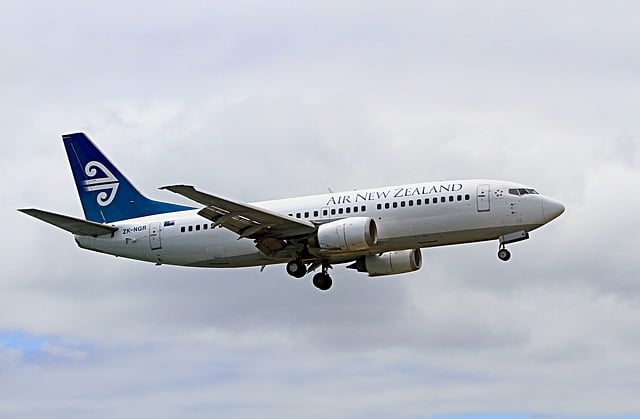Aerospace
Does the Aircraft have a horn ?

Does the Aircraft have a horn? Yes it does !
They don’t have horns in the way you would think of them, such as car, truck, or train horns. All certified aircraft, however, are equipped with a stall warning device (not an engine stall, but a warning indicating that the critical angle of attack for the wing is approaching, which, if exceeded, results in a stall, or loss of lift, due to separation of airflow over the upper surface of the wing) – some older aircraft use a stall warning light, however most aircraft have a stall warning horn. Furthermore, larger aircraft frequently have warning horns and/or tones for different device failure modes – these are audible signals inside the cockpit to alert the crew.
Airbus BelugaXL passes ground vibration test
Ground communication
A signaling or alarm device aboard an aircraft is analogous to a horn. When ground engineers are working in the cockpit, they will use a signal to communicate with their colleagues on the ground. To activate the horn, crew member or engineer Fred presses a tiny button labelled “GND” on the cockpit’s instrument panel. The button is difficult to locate, but when pressed, it sounds like three steamboats are moving underneath the plane. Engineers on the ground may want to communicate with their colleagues in the cockpit from time to time. They can do so by pressing a button in a small compartment near the nose wheel at the front of the aircraft. They can communicate directly by plugging a headset into this compartment.
A siren signal in eighth landing gear
The horn is mainly used for communication, but the aircraft can also emit a signal to warn engineers when a device fails or there is a fire. This signal sounds like an eighth-gear siren. This occurs, for example, 90 seconds after a problem occurs in the system that cools the aircraft’s other components, which is similar to the cooling system in a machine. The signals differ so that engineers can determine the device is under attack. The signalling device on an aircraft is not used in the same way as hooters and horns on other vehicles and vessels are. A pilot is not permitted to honk at other aircraft. because the signalling system is turned off
Facts Pilots Don’t Want You To Know…!!
Source : Yahoo answer, KLM – jessey de Graaf , KLM blog

Aerospace
Boeing Transfers Rocket Stage to NASA, Paving Way for Human Moon Mission

Boeing has achieved a significant milestone by providing NASA with the second core stage of the Space Launch System (SLS) rocket.
This crucial component, crafted at NASA’s Michoud Assembly Facility (MAF), is set to propel the Artemis II crew into lunar orbit, marking humanity’s return to deep space after a 50-year hiatus.
The monumental Boeing-built rocket stage, the largest element of the Artemis II mission, will embark on a journey aboard the Pegasus barge, traveling 900 miles to NASA’s Kennedy Space Center.
Comparison of two legendary aircraft B777x vs B747 aircraft:Click here
Upon arrival, it will be meticulously integrated with other essential Artemis II components, including the upper stage, solid rocket boosters, and NASA’s Orion spacecraft within the iconic Vehicle Assembly Building. This intricate integration process is a vital step toward the eagerly anticipated Artemis II launch, slated for 2025.
“Boeing-built products helped land humankind on the moon in 1969, and we’re proud to continue that legacy through the Artemis generation,” remarked Dave Dutcher, vice president and program manager for Boeing’s SLS program. “Together, with NASA and our industry partners and suppliers, we are building the world’s most capable rocket and paving the way to deep space through America’s rocket factory in New Orleans.”
NASA, Lockheed Martin Reveal X-59 Quiet Supersonic Aircraft:Click here
The delivery of Core Stage 2 marks a significant achievement in the evolution of the SLS rocket. Towering over 200 feet and powered by four RS-25 engines, this core stage, coupled with two solid-fueled booster rockets, will generate a staggering 8.8 million pounds of thrust. This immense power is crucial to launching Artemis II and future missions into the vast expanse of space.
The SLS rocket stands unparalleled in its capability to transport both crew and substantial cargo to the moon and beyond in a single launch. Its extraordinary capacity will facilitate the delivery of human-rated spacecraft, habitats, and scientific missions to destinations including the moon and Mars, ushering in a new era of space exploration.
-

 Travel1 week ago
Travel1 week agoAir India to Expand US Operations with Three New Routes After a Decade
-

 Travel2 weeks ago
Travel2 weeks agoWhy We Should Avoid These Stamps in a Passport
-

 Airlines1 month ago
Airlines1 month agoInvestigations Reveal Fake Chinese Titanium in Boeing and Airbus Jets
-

 Tech4 weeks ago
Tech4 weeks agoChina’s CATL Plans 1,800-Mile Electric Plane Launch by 2027
-

 Airport3 days ago
Airport3 days agoTop 10 Largest Airports in the World by Size
-

 Aerospace4 weeks ago
Aerospace4 weeks agoChina’s Fighter Jets Turn Wings into Autonomous Drones
-

 Airlines4 days ago
Airlines4 days agoAir India Rolls Out A350s for Delhi-New York JFK and Newark Routes
-

 Defence3 weeks ago
Defence3 weeks agoBoeing Enhances Chinook with New Engines and Block II Upgrades at $96 Million







